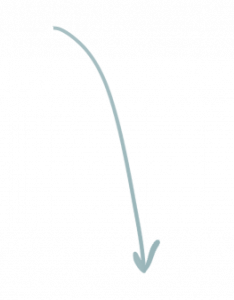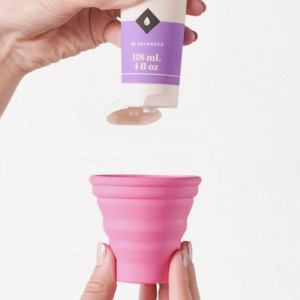There are three things certain in life: death, taxes, and the indisputable fact that if it weren’t for my cleaning lady, I’d still be using the toothbrush I received in my oral hygiene gift bag six years ago, the last time I visited a dentist.
What can I say? Even as an adult, I’m petrified of cavity-crushing white coats prodding my mouth with cold metal instruments, and I’m just as stressed by the idea of spring cleaning (or any kind of seasonal cleaning, for that matter). In that sense, I suppose I’m an accidental hoarder. It’s not that I feel any sense of impenetrable attachment to my antique-chic bathroom belongings; it’s just that tossing things away fills me with existential dread, as I never know where to begin.
But when, a few months ago, my ever-observant cleaning lady told me sternly, “It’s time to talk about your godforsaken toothbrush,” I knew I had to confront my fears and priorities.
“I do have another one,” I responded hurriedly, yanking another ratty instrument from my travel bag. “Do you think I should throw that one out?” I nodded towards the brush in the bathroom.
She scoffed at me as though I’d just uttered a groan-worthy dad joke — but I was asking in naive earnest. Turns out she wanted me to throw away both toothbrushes, even the one that couldn’t be more than three years old. And don’t get me started on my harrowing hairbrush.
Okay, so you’re supposed to throw away your personal care products a lot sooner than forever, and sooner still than several years. But when is the right time to kick your toiletries to the curb and start afresh? With my cleaning lady’s counsel as the springboard to spring cleaning, I took a deep dive into the details of this nitty-gritty question: when can you simply clean the gunk away, and when is it better to just throw the thing away?

Toothbrush
Fun fact: when you flush your toilet, the swirling water shoots aerosolized feces into the air, and the bacteria can bind to your bristles if your toothbrush is too close to the seat. To keep your toothbrush clean and pristine, store it as far away from the toilet as possible, and make sure it’s in an upright position where it can air-dry – a moist brush in a closed container is a recipe for microbial growth.
The American Dental Association (ADA) recommends that you rinse your toothbrush with water after each use to remove leftover paste or debris. For extra precaution, you can disinfect your toothbrush with hydrogen peroxide or antiseptic mouthwash, especially if you’re worried about dirt. Finally, even if you share a bank account, you shouldn’t share your toothbrush with your significant other, unless you want to share infections and blood diseases. (No, thanks!)
As for when to toss the toothbrush? The ADA says you should replace it every three to four months, or even sooner if the bristles are matted or frayed.
Bristle Hairbrush
Who would’ve thought there’d be so many tutorial videos on how to clean your hairbrush? Not surprisingly, I haven’t exactly been doing it right. But just like your toothbrush, your hairbrush has bristles that can trap all kinds of residue, including leftover hair products, dead skin cells, and dirt from the environment – so it’s important to clean the brush regularly if you want to keep your hair clean, too.
Basically, you can submerge your hairbrush in a bowl of water mixed with shampoo (plus baking soda for extra cleaning power), let the brush soak for three to five minutes, and then dip and shake the brush a few times to remove any lingering buildup. Bonus: you can use that old, tattered toothbrush you’re about to throw away to scrub the bristles of your hairbrush!
“Cleaning a hairbrush every two weeks is ideal given the dirt, debris, oil, bacteria, yeast, and other organisms that can build up,” explains Erum Ilyas, MD, a board-certified dermatologist. And with proper maintenance, that hairbrush can last you “Six months to a year, or even longer based on the integrity of the brush and bristles. The cleaning maintenance performed can increase the longevity of a hairbrush,” she says.
Pronged Hairbrush/Scalp Massager
You know those squishy scalp massager brushes that feel so smooth on our skin? “These are not nearly as durable as bristle brushes,” warns Ghanima Abdullah, a hair expert and cosmetologist at The Right Hairstyles.
“It’s unfortunate, because they are generally easy to keep clean,” Abdullah says. “However, you might be missing a prong or two as time goes on. If any are chipped in a way that could drag on your hair, it’s about time to toss it. If the base is chipped or cracked, definitely chuck it in the garbage. Those prong things melt, too, if you’re a fan of high heat from your blow dryer. [Then it’s time to] toss,” she advises.
Makeup
If you have sensitive skin like I do, it’s especially important to keep your makeup brushes and sponges clean (although, let’s be real, how many of us are doing our makeup during the pandemic?). According to dermatologists, sponges especially absorb leftover makeup, and the moisture can lead to bacteria overgrowth. Luckily, your makeup brushes and sponges are fairly simple to clean; wash them with mild soap (or even shampoo) in warm water and let them sit out to dry on a towel.
As far as when to discard your cosmetics products, here’s some advice from Liz Fuller, a makeup artist from Boston. “Most cosmetics and skincare products have a recommendation for how long a product’s formula is good for after the product is opened for the first time. Once opened and exposed to air, the countdown begins towards expiration,” Fuller explains. “What I do and what I tell clients to do, is to put a sticker on the product’s container with the date of ‘expiration.’ I find this to be a helpful way to remember when to dispose of makeup and skincare that could potentially be contaminated by bacteria,” she says.
“As far as makeup brushes, as a professional makeup artist, I buy the best brushes I can, because makeup application can be affected by the quality of the brushes,” Fuller notes. “Really good brushes should be able to stand up to frequent use and cleaning/sanitizing and should have a very long lifespan.”
Menstrual Cup
Look, Ma, no tampons! I have to admit, I was a bit late to the DivaCup party, but now I can’t imagine ever going back to disposables. The thing is, menstrual cups do require some careful maintenance, especially since you use them in a sensitive area. The DivaCup’s cleaning guide recommends that you boil the cup for five to ten minutes before your first use, then thoroughly wash your hands (with sanitizing hand soap) and your cup (with menstrual cup cleanser) before each insertion and after each removal.
With proper care, your menstrual cup can last several years (or how many hundreds of boxes of tampons?!), but there are a few key signs that your DivaCup is due for a replacement. According to the company, you should inspect your menstrual cup regularly and recycle it if you notice extreme discoloration, irritation, a foul odor, heavy staining, sudden leaking, a grainy texture, white residue, flaking, or other signs of deterioration like tears or cracks. It’s also time to pick up a new cup if you accidentally dropped yours in the toilet (hello, bacteria) or sanitized it with harsh cleaning agents (oops and ouch!).
Curling Iron
Wait, you’re supposed to clean a curling iron? At least I have a valid excuse – my hair is naturally wavy (read: frizzy in the humidity). But for those of you who like to twist and coil your locks, you can clean the crud off your curling iron using rubbing alcohol, or you can make a paste of three-parts baking soda and one-part water. Of course, only attempt this process on a cooled surface when the iron is unplugged – a burnt hand is a poor stylist, anyway!
As with any personal care item, this device has a shelf life, too, even if yours is resistant to rust. “Nevertheless, the coating does tend to peel with time. That stuff can snatch your hair,” explains Abdullah. “So if there’s any ceramic or stainless steel coating chipping in places, just get another one.”
“Besides that, naturally, one day [the iron] won’t just come on,” Abdullah notes. “All those tales about people having curling irons for years are fibs. Give it a year and it will either get so hot that your hair goes frizzle, or it won’t get hot at all. If you’ve had yours close to a year, watch for smoke before you put that thing in your hair,” she warns.
Hair Dryer
Like any machine with a filter, your hair dryer can get dirty – and when the filter is clogged with debris, the device can become dangerous to you and your hair. Luckily, the filter itself is easy enough to clean. Usually you can remove the filter by twisting it off, though some hair dryers require a screwdriver. Once you’ve removed the filter from the unplugged dryer, hold it under water to release the debris, then dry with a cloth or towel. Make sure the filter is completely dry before you reattach it!
As far as a timeframe on when to ditch your dryer? “When it smokes, it’s finished. For real,” says Abdullah. “Don’t try to use a smoking hair dryer! That’s a major fire hazard.” Enough said.

From your basic brushes to electronic care products, you probably have a few that are long past expired. Which products do you have trouble letting go of? Which ones can’t you wait to replace? Let us know in the comments!
For More Health And Wellness Articles, Read These:


